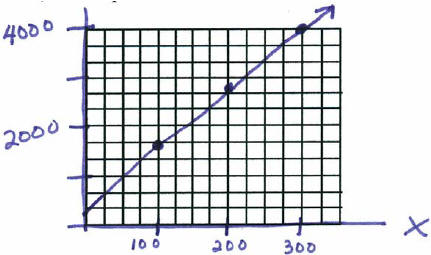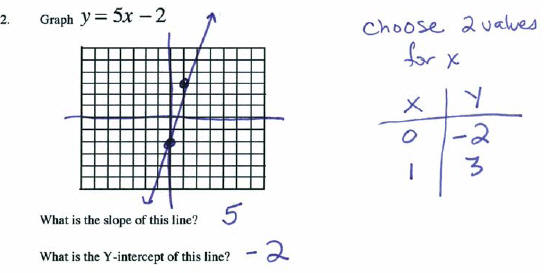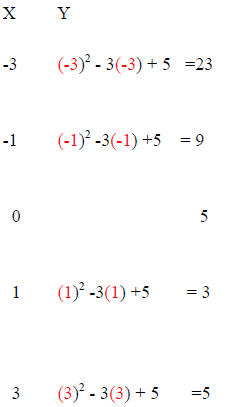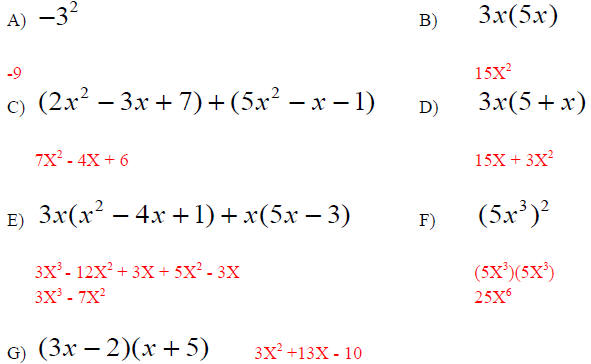Math 097 Test 2
1. The linear function f (x) = 12x + 400describes the cost
of producing x
yearbooks.
A) Create an input/output table for producing 0, 100, 200, 300 yearbooks
| X | F(X) |
| 0 | 12(0) + 400 = 400 |
| 100 | 12(100) + 400 = 1600 |
| 200 | 12(200) + 400 = 2800 |
| 300 | 12(300) +400 = 4000 |
B) Graph this linear function.

C) Find f (50)
12(50) + 400 = 1000
D) Write a complete English sentence explaining the meaning, in this
problem, of f (50).
The cost of producing 50 books is $1000.

3. Complete the following input/output table for y = x2
- 3x + 5

4. Explain the difference

Part A) is an equation where we expect one solution for Y.
Part B) is an inequality.
The solution for part B) will have the solution for part A) as the boundary of
the
solution set plus all smaller numbers.
5. Solve for X:

6. Graph all solutions to 3 - x ≥ 1. (see 5A for algebra)

7. Explain the difference and simplify each.

Part A) is addition and is simplified as it is (we cannot
add terms that are not like
terms). Part B) is multiplication. We can multiply anything. We multiply like
variables by adding exponents. X2(X3)=X5
8. Simplify (by removing parentheses, combining like terms, simplifying exponents).

9. Marty invests $10,000, part in a stock that earns 6%
annual interest, and the rest in a
mutual fund that earns 7% interest. If at the end of one year Marty earned
$656.73,
how much was invested in the stock and how much was invested in the mutual fund?
(You may guess and check (show the check) and get close for full credit.)
Guess 1 .06(5000) + .07(5000) = 300 + 350 = 650 very close, a little too small
Guess 2 .06(4000) + .07(6000) = 240 + 420 = 660 very close, a little too large
Guess 3 .06(4500) + .07(5500) = 270 + 385 = 655 extremely close
Estimate: Marty invested 4500 into the stock, 5500 into the mutual fund.
Equation: .06X + .07(10000 - X) = 656.73
Exact answer: Marty invested 4327 into the stock and 5673 into the mutual fund.
10. You need to sell your house for enough to pay your realtor (6% of the
selling price)
plus pay off a mortgage of $85,000. What minimum selling price will cover these
expenses (so you break even- you're left with 0)? (Guess and check close will
earn
you 75% credit. For full credit, guess and check until you can write an equation
to
solve.)
Guess: Sell for $90000. Check: $85000 + .06($90000) =
85000 + 5400 = 94000 not
enough to cover expenses yet.
Equation X = 85000 + .06X, .94X = 85000, X=$90,425.53 Sell for $90,425.53.


